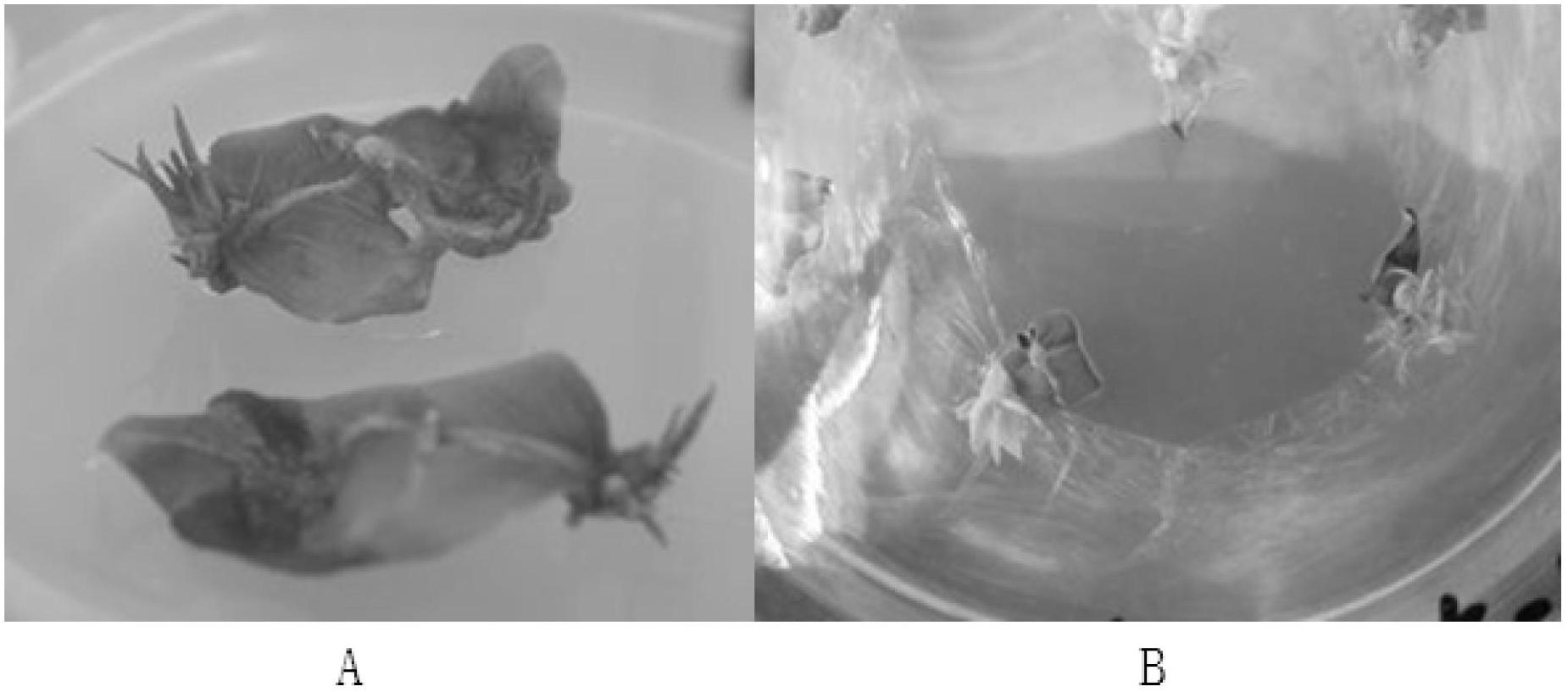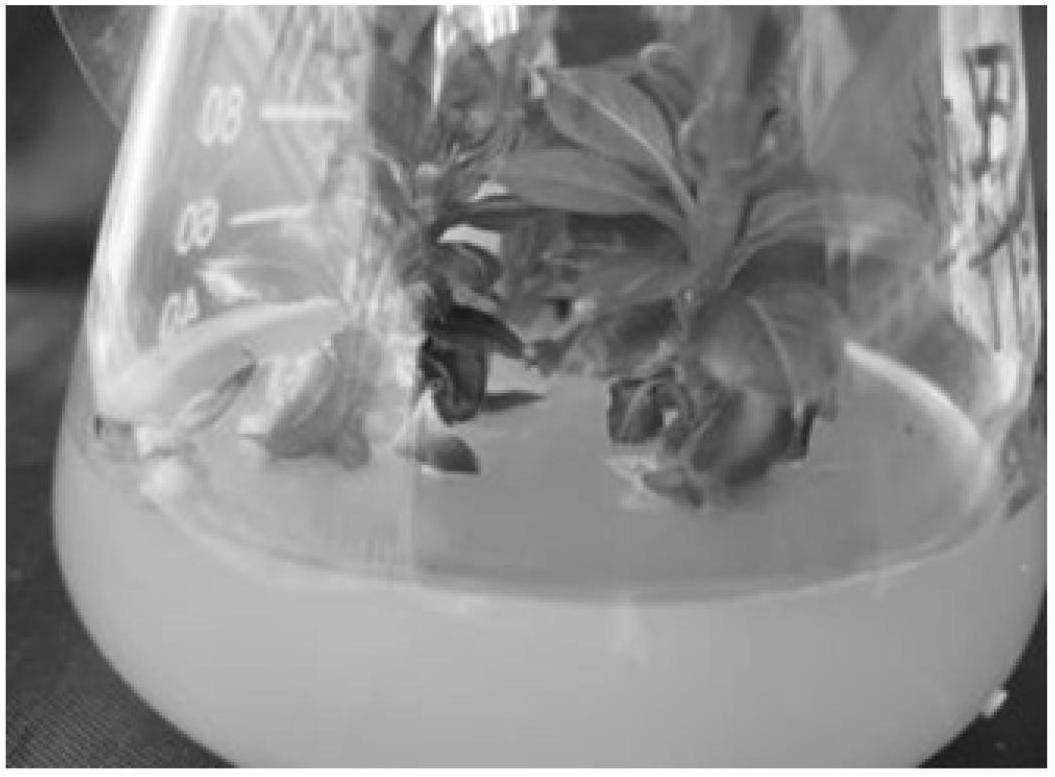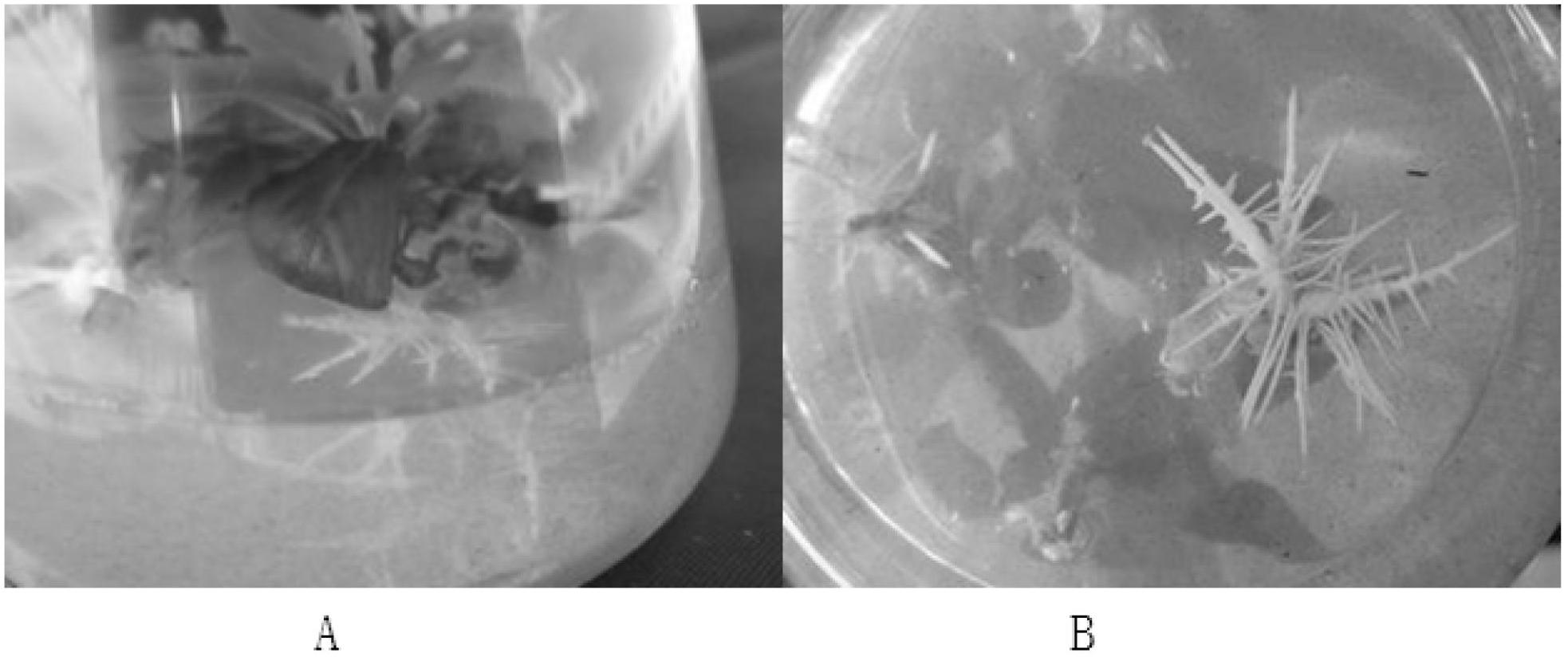Method for pear blade inducing adventitious buds to regenerate plant
A leaf and bud induction technology, applied in the field of plant cell engineering, can solve the problems of limited transformed varieties and narrow research scope
- Summary
- Abstract
- Description
- Claims
- Application Information
AI Technical Summary
Problems solved by technology
Method used
Image
Examples
Embodiment 1
[0020] (1) Select the healthy and young leaves of the test-tube plantlets, and cut 2 to 4 wounds perpendicular to the midrib of the leaves with a sterile blade on the ultra-clean workbench. On the culture medium, cultivate in the dark for 25 days and then transfer to the light. After 5 days, the edge curls to the back of the leaf and becomes cylindrical, and the leaves gradually turn yellow-green. After 25 days, a small amount of white and loose callus is formed on the veins and the incisions around them. tissue; after being placed under light for cultivation, the callus gradually turns light green, and adventitious buds are produced after inoculation for 30-35 days ( figure 1 ), the statistical adventitious bud differentiation rate was 66.67%;
[0021] The induction medium is: NN69+TDZ 2.0mg / L+IBA 0.3mg / L+sucrose 40g / L+agar 6g / L, pH value is 5.8; culture temperature is 25±2℃.
[0022] (2) After the leaves grow adventitious buds, transfer the adventitious buds to the prolifer...
PUM
 Login to View More
Login to View More Abstract
Description
Claims
Application Information
 Login to View More
Login to View More - R&D
- Intellectual Property
- Life Sciences
- Materials
- Tech Scout
- Unparalleled Data Quality
- Higher Quality Content
- 60% Fewer Hallucinations
Browse by: Latest US Patents, China's latest patents, Technical Efficacy Thesaurus, Application Domain, Technology Topic, Popular Technical Reports.
© 2025 PatSnap. All rights reserved.Legal|Privacy policy|Modern Slavery Act Transparency Statement|Sitemap|About US| Contact US: help@patsnap.com



